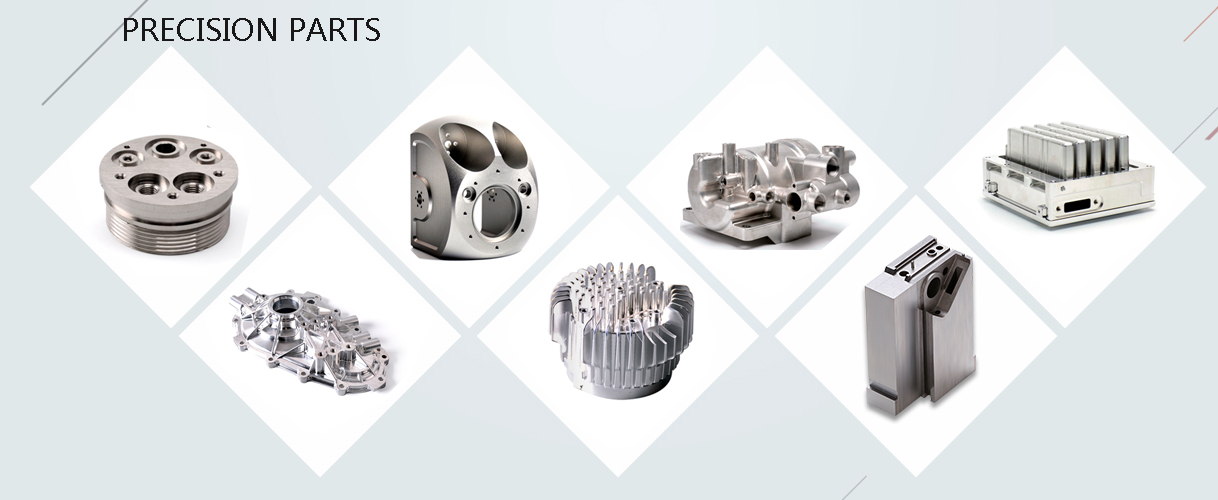PROTÓTIPO CNC
Serviços de protótipo CNC para peças de precisão
Precision parts processing can be divided into standard parts processing and non-standard parts processing according to the processing objects. Standard parts processing is relatively easy, and non-standard parts processing is relatively difficult.
The non-standard parts are proposed relative to the standard parts. The standard parts refer to the structure, size, drawing, marking and other aspects that have been fully standardized and are commonly used parts produced by professional factories, such as automotive standard parts and mold standard parts , All belong to the general standard parts.
O processamento de peças não padronizadas deve-se principalmente ao fato de que o país não estabeleceu especificações padronizadas estritas e não há outros acessórios que sejam controlados livremente pela empresa, exceto para os regulamentos de parâmetros relevantes. Existem muitas variedades de peças não padronizadas e atualmente não existe uma classificação muito padronizada.

produção de baixo volume
Devido à ampla gama de produção de lotes, geralmente é dividido em três tipos: “produção de lotes grandes”, “produção de lotes médios” e “produção de pequenos lotes”. A produção de pequenos lotes refere-se à produção de um único produto que é basicamente um produto especial que é necessário em pequenos lotes.
A produção de pequenos lotes de peça única é uma produção baseada em pedido (MTO) típica e suas características são semelhantes à produção de peça única. É comumente conhecido como “produção de pequenos lotes de peça única”. Portanto, em certo sentido, a expressão “produção em lote único” está mais de acordo com a situação real da empresa.
Modo de produção flexível, a fim de atender às necessidades de pequenos lotes diversificados, individualizados e multi-variedade dos clientes.
O protótipo é um ou alguns dos primeiros feitos de acordo com os desenhos de aparência do produto ou desenhos estruturais sem abrir o molde e é usado para verificar a aparência ou estrutura do modelo funcional.
Protótipo CNC
A carga de trabalho principal do CNC Shouban é feita com máquinas-ferramenta CNC, e dependendo do equipamento utilizado, pode ser dividida em Shouban de prototipagem rápida a laser (SLA) e centro de usinagem (CNC) Shouban e RP Shouban (impressão 3D).
CNC Shouban: A qualidade do processamento é estável, a precisão do processamento é alta e a precisão de repetição é alta. Ele pode processar formas complexas que são difíceis de serem processadas por métodos convencionais e pode até processar algumas peças de processamento não observáveis.
The advantages of CNC Shouban are that it can accurately reflect the information expressed in the drawings, and the surface quality of CNC Shouban is high, especially after its surface spraying and screen printing are completed, even more, glorious than the products produced after opening the mold. Therefore, CNC Shouban manufacturing has increasingly become the mainstream of Shouban manufacturing.
3D
3D printing is a type of rapid prototyping technology. It is a technology based on digital model files, which uses special wax materials, powdered metals or plastics and other adhesive materials to construct objects by layer-by-layer printing. It is often used in the field of mold manufacturing, industrial design, etc. to make models or for the direct manufacture of some products. This technology is used in jewelry, footwear, industrial design, architecture, engineering and construction, automotive, aerospace, dental and medical industries, It has applications in education, civil engineering, firearms, and other fields.

3D printing can easily achieve personalized design and customization of products, greatly reducing product development time. This advantage has given us non-mechanical research workers, and can also carry out relevant geometric, structural, material and other aspects of research, greatly deepening and expanding the related research problems in manufacturing
Sheet metal
Sheet metal is the metal deformation of some metal sheets through manual or die stamping to form the desired shape and size, and can be further welded or a small amount of mechanical processing to form more complex parts. Generally, the most important sheet metal process is The four steps are shearing, punching / cutting /, folding / rolling, welding, surface treatment, etc.

As the application of sheet metal becomes more and more extensive, the design of sheet metal parts has become an important part of the product development process. Sheet metal has the characteristics of light weight, high strength, electrical conductivity (can be used for electromagnetic shielding), low cost, and good mass production performance. It is widely used in electronic appliances, communications, automotive industry, medical equipment and other fields In computer cases, mobile phones, and MP3s, sheet metal is an essential component.
Advantages Of Making A Prototype
How can partnering with Star Rapid to quickly manufacture a prototype help you and your business? Here are just some of the ways:
- Show your customers and investors a physical model of your product
- Demonstrate the appearance, dimensions and features of your product
- Test the market with your product before production
- Save time and money by identifying and reducing design flaws
- Improve and streamline the production process
- Create multiple versions with different colors, surface textures and finishing processes
Se pudermos ajudá-lo com seu projeto, ligue para 0086-769-82821468 ou e-mail sales@kaitomould.com



